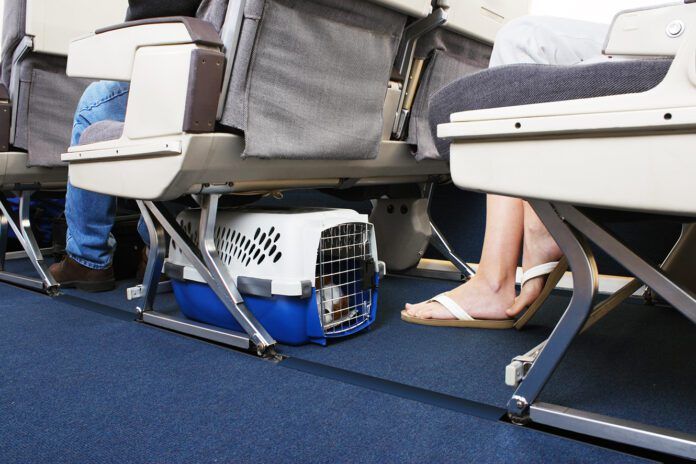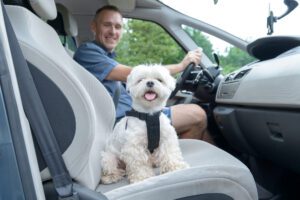
What’s the best way to travel long-distance with a dog? When deciding whether it’s best to drive or fly with your dog, here are some things you should consider:
- Is this trip right for your dog? Think about how the travel and subsequent circumstances will affect your dog. How does your dog handle short car rides? Can she relax in the car? Does she willingly relieve herself when she’s away from home?

Overall, ask yourself whether your dog is generally confident and able to go with the flow in most situations, or whether she is a creature of habit who finds change terribly stressful? If she meets the latter description, and you’re not relocating, your dog might find staying home with a pet sitter less stressful than going with you.
- What will you do when you get there? Will you have a jam-packed schedule? Will any of your activities accommodate your dog? Is your dog likely to enjoy whatever you have on the agenda or might she find it overwhelming? If the latter, do your plans have the wiggle room you’ll need to bow out of an activity or adjust your schedule so you can attend to your dog’s needs?
- Consider your dog’s breed and overall health. These are especially important if you’re considering air travel.

Most airlines have breed restrictions that disallow brachycephalic breeds such a Pugs, Boston Terriers, and Lhasa Apsos, along with many strong, powerful breeds such a Mastiffs, Cane Corsos, Chow Chows, and American Staffordshire Terriers. Air travel also requires that dogs be at least 8 weeks old, and a veterinarian must certify that they are healthy via a physical exam and health certificate issued within 10 days of travel.
Of course you’ll want to make sure your dog is healthy before embarking on a road trip, too! In the case of older dogs with arthritis, can you keep them comfortable confined to the car for long periods? Does your dog get carsick? Will you encounter any extreme temperatures along the way that might make potty stops more challenging? How will you safely handle it? Will your dog’s life be in jeopardy if your air conditioning goes on the blink or your car breaks down?
Once You’ve Made Your Travel Choice
If after you consider these points, you decide to travel with your dog in a car or recreational vehicle, see “Driving Long-Distance with Your Dog” for more information about safe travel on the road.
If, instead, you decide that it might be better to put your dog on an airplane, instead, see “Flying With Your Dog” for tips on air travel with your dog, whether in-cabin or as cargo.




